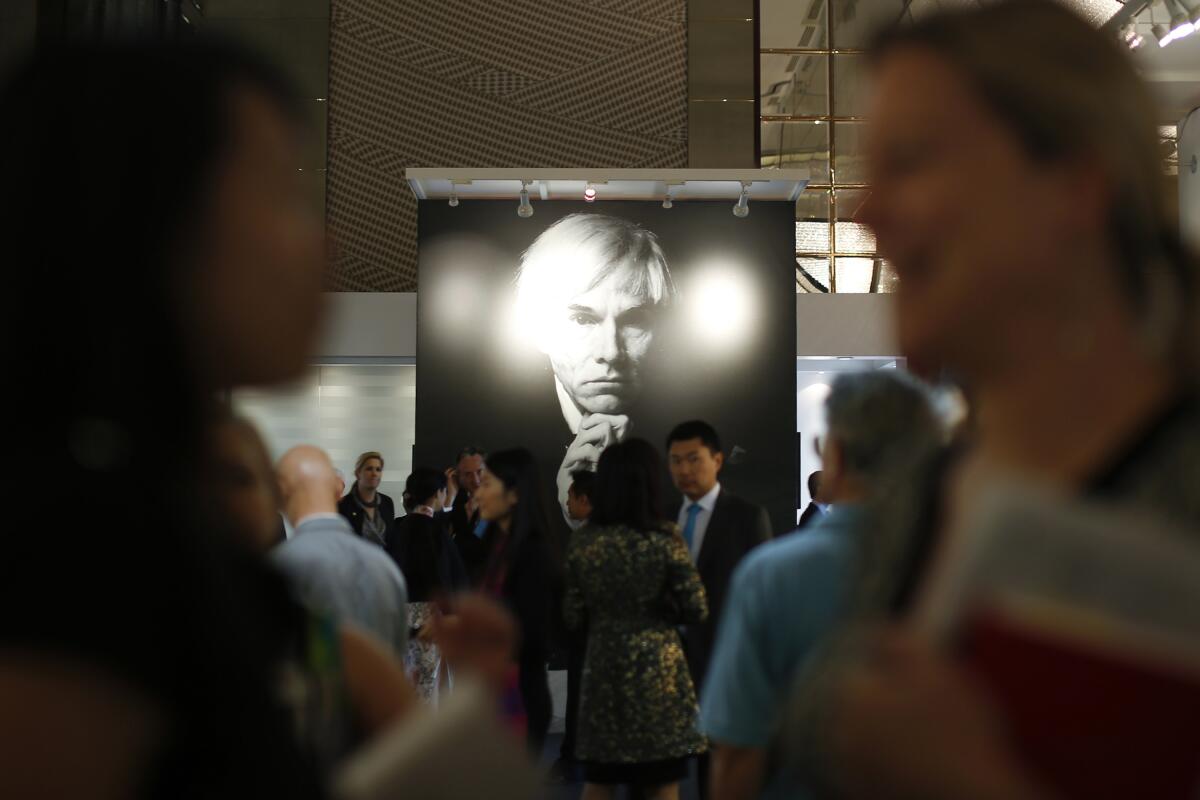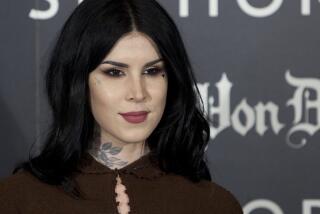Supreme Court copyright case: Did Warhol images of Prince cross the line?

WASHINGTON — The Supreme Court on Wednesday weighed a major copyright clash over Andy Warhol’s use of a photo of Prince, and appeared divided on how far artists may go in using the work of others.
The case is being followed in the art and entertainment industries, which both rely on copyrights and often license copyrighted material for new works, such as films that are based on or adapted from novels.
During a lively back-and-forth, the justices sounded interested and engaged but divided over the case. At issue is whether an artist may use copyrighted material without paying a fee if the new work is “transformative” in its meaning and message.
Chief Justice John G. Roberts Jr. said Warhol’s work may qualify as new and transformative, as his silkscreen portraits of Prince were quite different from the photos they were based on. The painter’s work was a “comment on modern society” and the impact of celebrity, Roberts said.
Such a view, if adopted by the court, could devastate the photography industry, replied Washington attorney Lisa S. Blatt, who represents celebrity photographer Lynn Goldsmith. It could also damage the music, movie and publishing industries, Blatt said.
It would be too easy, she said, for artists, advertisers or others to rework a copyrighted piece and claim they had created something new. “Copyright will be at the mercy of copycats” if that is allowed, she said.
Justice Clarence Thomas seemed to agree with Blatt. The normally reticent jurist also had a surprise for his colleagues.
“Let’s say that I’m ... a Prince fan, which I was in the ’80s,” he said, prompting laughter in the courtroom. “And ... let’s say I’m also a Syracuse [University football] fan ... and make one of those big blowup posters of [the Warhol painting] ‘Orange Prince’ and change the colors a little bit around the edges and put ‘Go Orange’ underneath.
“Would you sue me” for infringing Warhol’s copyright? Thomas asked Roman Martinez, attorney for the Andy Warhol Foundation for the Visual Arts.
“I’ve changed the message,” he added.
Martinez replied that such a use may not be the kind of transformation“that the copyright laws are intended to foster, which is really encouraging follow-on artists to use creativity to kind of introduce new ideas.”
The exchange seemed to only complicate the question of when a new and transformed message allows for freely using copyrighted work.
Current copyright laws include a limited exemption for “fair use,” such as quoting a few lines from a book for a review or a news story. But the Warhol Foundation is asking the court to uphold a much broader exemption for new works that transform a copyrighted original.
For the record:
1:21 p.m. Oct. 13, 2022An earlier version of this story stated that Andy Warhol credited photographer Lynn Goldsmith and paid her a licensing fee. It was Vanity Fair that credited her and paid the fee.
In 1984, Vanity Fair magazine hired Warhol to do a painting portraying Prince, whose career had begun to reach new heights of commercial success with the release of “Purple Rain.” Warhol used a copyrighted photo taken in 1981 by Goldsmith to create the silkscreen. Vanity Fair credited Goldsmith for the photo and paid a $400 licensing fee.
More than three decades later, after Prince’s death, the Warhol Foundation charged Vanity Fair $10,250 to publish a larger set of silkscreens Warhol had made in 1984. This time, Goldsmith received no credit and no fee for the use of her work. When she raised the issue, the foundation sued her, alleging its use of her work was fair and legal. The U.S. 2nd Circuit Court of Appeals disagreed, saying there is no exception to fair use for celebrity artists.
The Supreme Court agreed to decide Warhol Foundation vs. Goldsmith because judges were divided over whether a new work that “transforms” a copyrighted original is protected as fair use.
In their legal briefs, lawyers for the Warhol Foundation argued that “a creative work that conveys a new meaning or message is transformative for purposes of the Copyright Act’s fair use defense” — so Warhol was free to use Goldsmith’s copyrighted photo for his silkscreens of Prince.
But Blatt, Goldsmith’s lawyer, said this view, if upheld, would upset all of copyright law.
It “would transform copyright law into all copying, no right,” she argued, saying that songs could be altered, book endings changed or photographs airbrushed to escape the reach of a copyright.
In that scenario, she wrote in her brief to the court, “fair use becomes a license to steal.”
More to Read
Get the L.A. Times Politics newsletter
Deeply reported insights into legislation, politics and policy from Sacramento, Washington and beyond. In your inbox three times per week.
You may occasionally receive promotional content from the Los Angeles Times.











